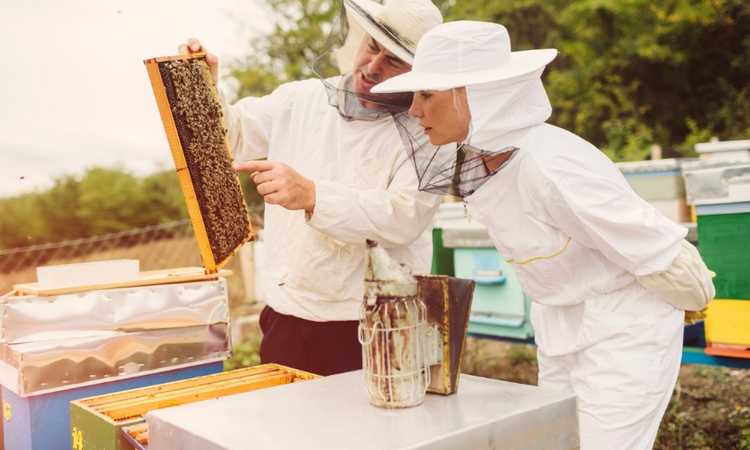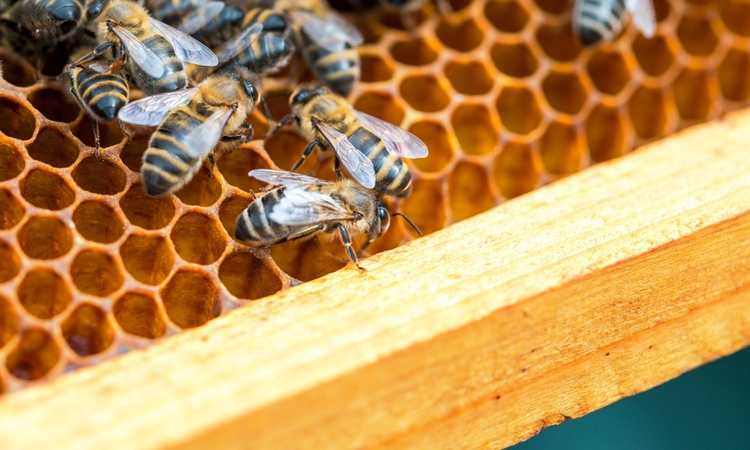Beekeeping can be a rewarding hobby, providing you with plenty of delicious honey to enjoy. To get started, you’ll need to purchase some basic supplies, including a bee hive, frames, and a suit. Once you have your supplies, you’ll need to find a good location for your hive. With a little patience and care, you can successfully keep bees and harvest honey.
What do you need to start beekeeping?
To get started in beekeeping, you’ll need a few key supplies.
First, you’ll need to purchase a beehive. This will provide a safe and comfortable home for your bees.
Next, you’ll need to buy some beekeeping equipment, including a bee brush, smoker, and veil. This will enable you to safely handle your bees and protect yourself from stings.
Finally, you’ll need to purchase some honeybees. These can be purchased from a local beekeeper or online. Once you have all of these supplies, you’ll be ready to start keeping bees!

The basics of beekeeping – hives, bees, and honey
Although beekeeping is often thought of as a hobby, it can also be a profitable business. Beekeepers raise bees in order to collect their honey, which can be sold commercially or used for personal consumption. In order to be successful, beekeepers must have a good understanding of the basic components of beekeeping: hives, bees, and honey.
Hives are the structures in which bees are kept. They come in a variety of sizes and designs, but all hives provide a place for the bees to live and store their honey. Beekeepers must have at least one hive in order to keep bees.
Bees are the insects that produce honey. There are two main types of bees kept by beekeepers: worker bees and drones. Worker bees are the female bees that do all of the work in the hive, including collecting nectar and pollen, building wax comb, and caring for the young. Drones are the male bees whose only job is to mate with the queen bee. Every hive has thousands of worker bees and only a few hundred drones.
Honey is the sweet substance that is produced by bees from nectar collected from flowers. It is used as food by the bees and is also harvested by beekeepers for human consumption. Honey has many uses, including in baking and as a natural sweetener. It can also be used medicinally to treat a variety of ailments.
Beekeeping is a rewarding hobby or business that anyone can get involved in. By understanding the basics of hives, bees, and honey, you can be on your way to becoming a successful beekeeper.
How to take care of your bees and hive
Every year, billions of bees die due to colony collapse disorder, leaving farmers without pollinators for their crops. While there is still much mystery surrounding this phenomenon, there are some things that beekeepers can do to help their hives thrive.
One of the most important things is to keep the hive clean. Regularly inspect the frames and remove any debris or dead bees. You should also make sure that the entrance to the hive is unobstructed so that the bees can come and go as they please.
In addition, provide your bees with a variety of flowers to forage from, and avoid using pesticides near the hive. By taking these simple steps, you can help create a healthy environment for your bees and give them a better chance of surviving colony collapse disorder.

Tips for harvesting honey from your hive
If you’re one of the many people who have taken up beekeeping in recent years, you may be wondering how to harvest honey from your hive. While the process may seem daunting at first, it’s actually quite straightforward.
Here are a few tips to help you get started.
First, make sure that the bees have had a chance to fill the comb with honey. This usually takes around six weeks.
Then, use a bee smoker to calm the bees before you begin working with the hive.
Next, put on your protective clothing, including gloves and a veil.
Once you’re suitably protected, remove the frames from the hive and scrape off the beeswax capping using a knife or an uncapping fork.
Finally, use a strainer to filter the honey into jars or containers.
And that’s it! With a bit of practice, you’ll be able to harvest honey from your hive like a pro.
What to do if you encounter problems with your hive
Beekeeping is a rewarding hobby, but it’s not always easy. At some point, every beekeeper will encounter problems with their hive. Whether it’s a queen that stops laying eggs or a swarm that’s gotten out of control, there are a few steps you can take to solve the problem.
The first step is to identify the problem. Is the hive too hot or too cold? Are there not enough bees? Is there an infestation of mites? Once you’ve identified the problem, you can take steps to solve it.
For example, if the hive is too hot, you can add more ventilation; if there are not enough bees, you can add more frames of comb. The key is to act quickly and decisively. With a little effort, you can get your hive back on track in no time.
So, there you have it – everything you need to get started with beekeeping. Beekeeping is a rewarding hobby that can produce delicious honey for your family and friends. Just be sure to do your research, start small, and take good care of your bees and hive, and you’ll be well on your way to becoming a successful beekeeper. Thanks for reading!

Hi – I’m Erika, the head writer and expert beekeeper here at Just Beekeeping! I am a backyard beekeeper and proud member of the American Beekeeping Federation (ABF) and the Central Indiana Beekeepers Association. In addition, I am an educator with advanced degrees from UC-Berkeley and the University of Southern California (USC). I use my expertise to help others learn about beekeeping, and I am an advocate for all subjects bee related!